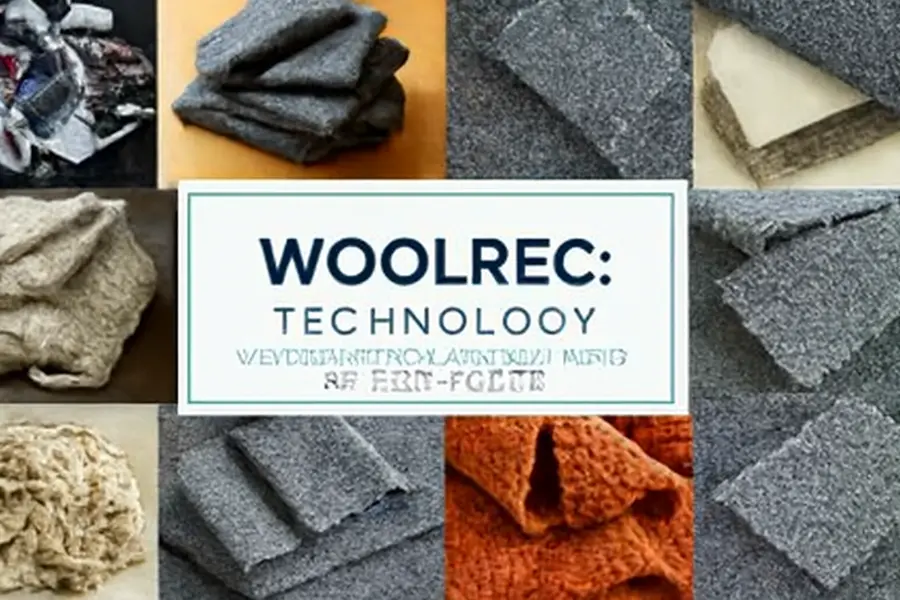Woolrec Technology: Leading the Charge in Sustainable Wool Recycling
As the world pushes toward more sustainable practices, industries are continuously exploring ways to minimize waste and reduce their ecological footprint. In the textile industry, Woolrec Technology has emerged as a game-changing innovation that not only tackles waste but also contributes to a greener future. By recycling wool from discarded garments, factory waste, and other wool sources, Wool recycling technology transforms old wool into high-quality products, significantly reducing the need for new wool production. This process conserves natural resources like water, land, and energy, making it a vital part of the ongoing sustainability movement in textiles. For more detailed information, you can visit Woolrec Technology.
What is Woolrec Technology?
Wool recycling technology is a cutting-edge solution for recycling wool waste into new, high-quality wool fibers. Unlike traditional wool production, which is resource-intensive and often harmful to the environment, this technology repurposes discarded wool from various sources such as factory offcuts and old garments into new products. This not only reduces the need for virgin wool but also prevents wool waste from ending up in landfills, supporting a circular economy in textiles. By reusing wool rather than producing it from scratch, Woolrec significantly lowers the environmental impact of wool production. For informative articles on the subject, visit Techaiautomate.
How Does Woolrec Technology Operate?
The Woolrec process is designed to be both efficient and sustainable, consisting of several key stages:
- Collection of Wool Waste: The first step involves gathering wool waste from old clothes, factory scraps, and other wool-based materials. This is a crucial move to reduce textile waste that would otherwise contribute to landfill overflow.
- Sorting and Cleaning: After collection, the wool is carefully sorted and cleaned to eliminate any synthetic fibers, dirt, or contaminants. This step ensures that the final product is made from the best-quality wool fibers.
- Fiber Separation: In this phase, wool is separated from any remaining impurities, ensuring that only pure wool is used in the next stages of the recycling process.
- Re-spinning Wool: The cleaned wool fibers are re-spun into yarn, which serves as the raw material for creating various wool products, from garments to upholstery.
- Creating New Products: Finally, the yarn is used to manufacture sustainable products, such as wool fabrics, carpets, automotive textiles, and more. These products are reintroduced to the market, closing the recycling loop.
Environmental Benefits of Woolrec Technology
Woolrec Technology offers numerous environmental benefits, contributing significantly to sustainability in textiles:
- Resource Conservation: Woolrec’s process helps conserve water, energy, and land by recycling wool instead of producing new fibers. For example, recycling wool saves around 6,000 liters of water per kilogram, which is vital in water-scarce regions.
- Lower Carbon Footprint: Wool recycling technology reduces the carbon footprint by minimizing the need for traditional wool farming, which often involves significant greenhouse gas emissions. The recycling process itself requires much less energy, further decreasing the overall environmental impact.
- Water Efficiency: Traditional wool production uses massive amounts of water, but with Wool recycling technology, the water usage is drastically reduced, making the process far more sustainable.
- Biodegradable Products: Wool is naturally biodegradable, and by recycling it, Woolrec ensures that the final products will decompose naturally, unlike synthetic alternatives that can persist in landfills for hundreds of years.
Applications of Woolrec Technology
Woolrec Technology extends beyond the fashion industry, offering valuable solutions to multiple sectors:
- Fashion: Many sustainable clothing brands are turning to recycled wool for their collections. The fibers maintain the same quality as virgin wool while significantly reducing environmental harm.
- Automotive: Recycled wool is increasingly used for interior textiles in vehicles, such as insulation and padding, contributing to more eco-friendly car manufacturing.
- Construction: Woolrec supports the development of sustainable insulation materials made from recycled wool, providing excellent thermal properties and contributing to energy-efficient buildings.
- Home Furnishings: Wool-based upholstery, carpets, and other home decor items benefit from the durability and natural fire-resistant properties of wool, offering consumers an eco-friendly alternative to synthetic materials.
Challenges and the Path Ahead
While the advantages of Woolrec Technology are clear, some obstacles remain, including the high initial cost of setting up recycling facilities and the need to increase awareness and education on the environmental benefits of wool recycling. Ensuring the consistent quality of recycled wool fibers is also crucial, but ongoing advancements in technology are addressing these challenges.
The future of Wool recycling technology is promising, with innovations aimed at making wool recycling even more efficient. The integration of artificial intelligence (AI) for sorting wool and blockchain technology for transparency is expected to drive the technology forward, enhancing its efficiency and ensuring a fully sustainable textile production system.
FAQs
- What is Woolrec Technology?
Wool recycling technology recycles wool waste into high-quality fibers, reducing the need for virgin wool production. - How does Woolrec Technology promote sustainability?
It conserves resources like water and energy by reusing wool, minimizing waste, and lowering carbon emissions. - What industries benefit from Wool recycling technology?
Industries like fashion, automotive, construction, and home furnishings benefit from recycled wool products. - What are the environmental advantages of Woolrec Technology?
It reduces waste, conserves resources, lowers carbon footprints, and produces biodegradable products. - What are the challenges in adopting Woolrec Technology?
Challenges include high initial investment costs, quality control of recycled wool, and lack of consumer awareness. - What does the future hold for Wool recycling technology?
The future includes advancements in AI and blockchain to improve efficiency and transparency in wool recycling.
For those interested in exploring more about Woolrec Technology, visit Woolrec Bin for additional details and resources.
